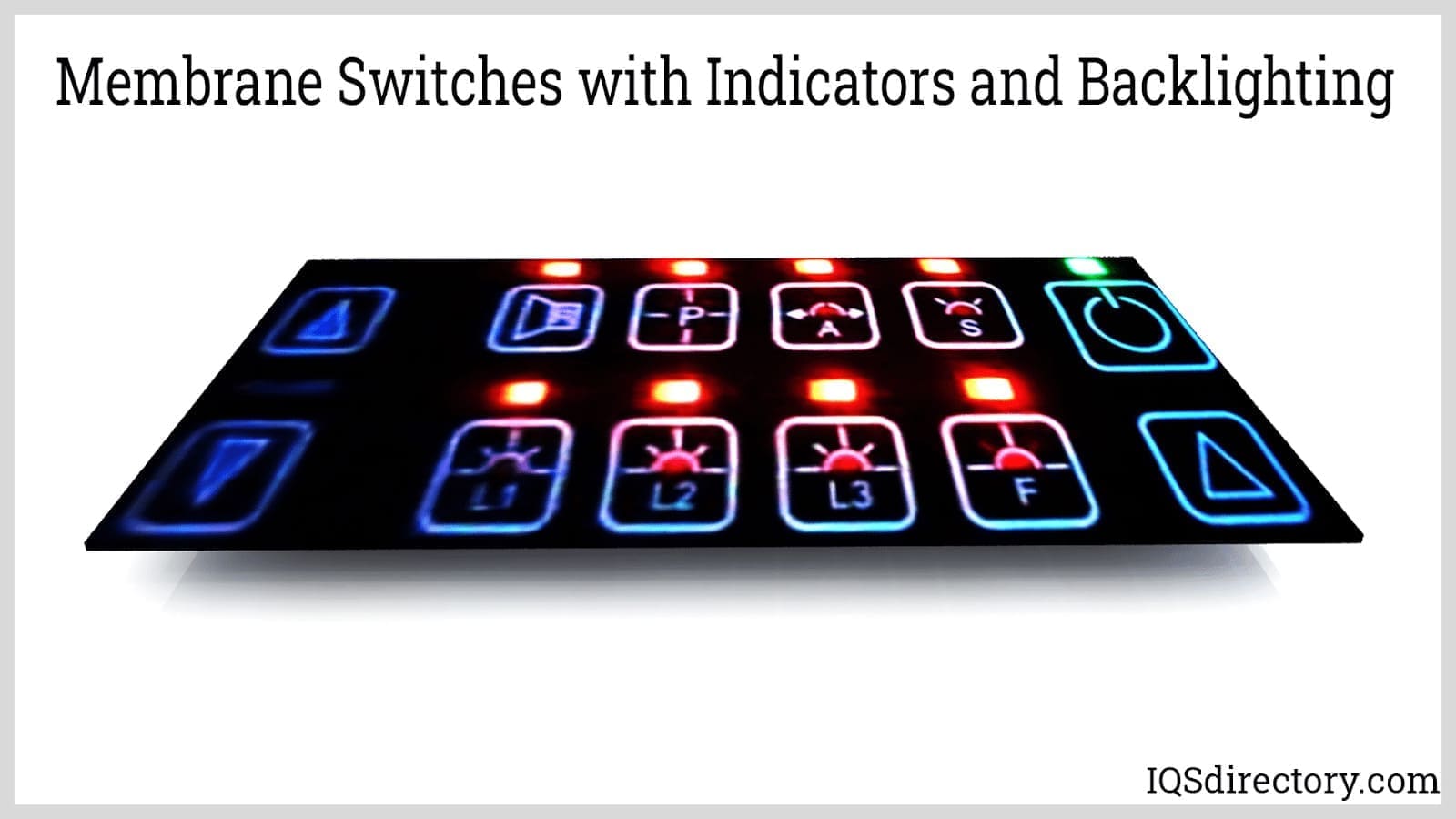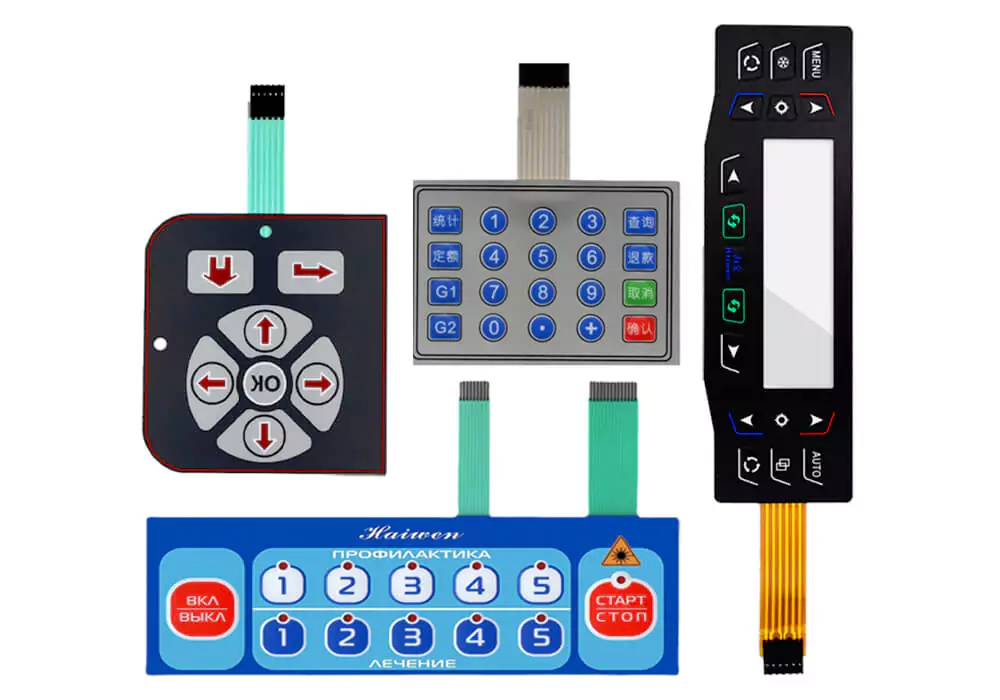The Manufacturing Refine Behind Membrane Switch: What You Need to Know
The manufacturing process behind membrane layer changes combines careful style, material choice, and quality control. It starts with understanding the ins and outs of membrane switch layout and advances via various phases, including material selections and printing methods. Each stage plays an important duty in guaranteeing capability and resilience. Nonetheless, the complexities of layer building and the strenuous testing requirements might disclose insights that are not promptly apparent. What exists past these foundational elements?
Comprehending Membrane Layer Switch Over Design
Although membrane switches might show up straightforward at first glance, their style includes detailed factors to consider that assure functionality and sturdiness. The style process begins with an extensive understanding of individual demands, including the interface's designated application and environmental elements. Ergonomics is an essential element, as the layout must facilitate ease of usage while making certain that responsive comments fulfills individual expectations.Moreover, the layering of elements, such as visuals overlays, sticky layers, and conductive traces, need to be exactly engineered. membrane switch. This split arrangement not just influences the switch's responsiveness yet additionally affects its durability. Attention is offered to the securing methods employed to protect versus wetness and dust, which can endanger efficiency. Furthermore, design factors to consider encompass looks, where color pattern and aesthetic clearness enhance customer experience. Eventually, the design of membrane layer changes equilibriums performance, user experience, and durability, making certain that they satisfy the needs of different applications efficiently
Products Utilized in Membrane Layer Change Production
When choosing products for membrane button manufacturing, it is vital to consider both performance and toughness. The primary products consist of polyester and polycarbonate films, which give versatility and toughness. These films are usually coated with glue to guarantee appropriate bonding to substratums. Conductive inks, usually made up of silver or carbon, are crucial for developing electrical connections within the button, allowing for trustworthy operation.Additionally, a safety layer, such as a hard layer, is regularly related to improve scrape resistance and longevity. The choice of backing product, such as acrylic or foam, can substantially impact the switch's responsive feeling and overall user experience. Additionally, numerous environmental elements, consisting of temperature level and humidity, ought to assist product option to guarantee peak performance in certain applications. Eventually, the ideal mix of products adds to the membrane layer button's capability and life-span, making educated selections essential for producers.
The Printing Process: Creating Graphics and Text
The printing process in membrane button production plays a considerable duty in creating high-quality graphics and message. Different visuals layout strategies are employed to guarantee aesthetic allure and functionality, while mindful ink selection methods are important for sturdiness and performance. Understanding these elements is fundamental for attaining ideal lead to membrane switch design.
Graphic Style Techniques
Graphic design techniques play an important duty in the printing process of membrane layer switches, as they specify just how graphics and message will eventually show up on the last product. Efficient graphic layout includes the strategic use designs, shades, and fonts to enhance readability and aesthetic allure. Designers often use vector graphics for scalability, ensuring that pictures remain sharp at different dimensions. Additionally, focus to contrast and positioning is essential, as it influences individual communication and aesthetic high quality. The incorporation of branding aspects, such as logo designs, must be managed with like maintain brand stability. Overall, thoughtful graphic style strategies contribute significantly to the capability and attractiveness of membrane switches, influencing customer experience and product performance.
Ink Choice Approaches
Picking the appropriate ink is vital for attaining the wanted visual quality and sturdiness in membrane layer button manufacturing. Various ink types are utilized, including solvent-based, water-based, and UV-curable inks. Each type uses distinctive characteristics, such as resistance, versatility, and bond to ecological aspects. Solvent-based inks are commonly preferred for their longevity and vivid shades, while water-based inks are extra eco pleasant however may have restrictions in bond. UV-curable inks give fast treating and durable efficiency. Furthermore, color matching strategies guarantee that the picked inks align with style requirements. Eventually, the selection of ink must consider factors such as application approach, substrate compatibility, and end-use requirements to accomplish remarkable cause membrane layer switch graphics and text.
Layer Construction and Setting Up

Material Choice Refine
A mindful option of products is important in the manufacturing procedure of membrane layer buttons, as it straight affects capability and resilience. The primary materials used include polyester, polycarbonate, and different conductive inks. Polyester is commonly preferred for its superb resistance to chemicals and abrasion, making it ideal for rough settings. Polycarbonate, on the various other hand, gives premium quality and influence resistance, which is valuable for applications requiring visibility and effectiveness. Conductive inks, commonly made up of silver or carbon, are vital for creating reputable electrical pathways. Furthermore, the choice of glue products influences the total integrity of the switch - membrane switch. Assessing elements such as environmental direct exposure, responsive comments, and aesthetic requirements overviews makers in choosing the very best products for their particular applications
Layer Adhesion Strategies
Adhering layers in membrane button building and construction is a crucial process that assures performance and longevity. Numerous bond techniques are used to protect perfect bonding in between layers, which usually include using adhesives, heat, and stress. Pressure-sensitive adhesives (PSAs) are typically made use of for their simplicity of application and immediate bonding capacities. Additionally, thermal bonding strategies can be applied, where warmth is used to turn on adhesive homes, safeguarding a strong bond. The selection of adhesion approach largely depends upon the products included and the details application demands of the membrane layer button. Appropriate placement and uniform application of adhesives are necessary to prevent problems, safeguarding the switch operates properly throughout its intended life read the full info here expectancy.
Quality Assurance Measures
Ensuring top quality control during the layer building a fantastic read and setting up of membrane layer buttons is important for preserving efficiency and reliability. This process usually entails several vital procedures, consisting of complete examinations at each phase of manufacturing. Producers use sophisticated screening approaches, such as peel examinations and attachment analyses, to validate the integrity of layer bonds. Additionally, visual evaluations are carried out to determine any type of flaws in printing or material variances. Ecological problems, such as temperature and humidity, are thoroughly kept track of to ensure optimal curing and adhesion. Routine calibration of equipment helps maintain specific production requirements. By carrying out these high quality control steps, manufacturers can greatly reduce the threat of item failure, guaranteeing that the last membrane layer switches meet the called for specs and customer assumptions.
Examining and High Quality Control Steps

Technologies in Membrane Layer Switch Modern Technology
As improvements in innovation proceed to progress, membrane buttons are benefiting from innovative advancements that enhance their capability and individual experience. One notable technology is the combination of capacitive touch technology, which permits more user-friendly and responsive individual interfaces. This shift not only boosts looks but additionally decreases mechanical damage, extending the life expectancy of the switches.Additionally, advancements in visuals overlay products have caused improved toughness and resistance to ecological factors such as wetness and UV light. These products now provide boosted clarity and brightness, more elevating the visual appeal.Furthermore, the unification of clever technology is changing membrane layer switches into interactive control panels, making it possible for connectivity with IoT devices. This connectivity promotes a smooth user experience, leading the way for applications in numerous sectors, from healthcare to consumer electronics. Jointly, these technologies position membrane switches as important parts in modern-day device design.
Frequently Asked Concerns
Exactly how Lengthy Does the Membrane Layer Switch Over Production Refine Take?
The period of the membrane layer button production procedure can differ substantially. Factors such as complexity, products used, and manufacturing quantity impact timelines, with regular manufacturing varying from a couple of days to numerous weeks for conclusion.
What Are the Typical Applications for Membrane Layer Switches?
Membrane switches are typically utilized in various industries, consisting of auto controls, house devices, clinical gadgets, and consumer electronics (membrane switch). Their flexibility and resilience make them perfect for applications requiring user-friendly user interfaces and trusted efficiency in diverse environments
Can Membrane Switches Over Be Personalized for Specific Needs?

What Is the Lifespan of a Typical Membrane Change?
The life-span of a regular membrane layer button differs, however typically, it varies from 1 to 5 million cycles. Variables such as usage, atmosphere, and worldly top quality considerably affect longevity and general efficiency over time.

Are Membrane Switches Over Eco-friendly?
The ecological friendliness of membrane switches over varies. Some materials used may not be recyclable, while others can be environment-friendly. The general impact depends upon making products and techniques, necessitating mindful factor to consider during option and disposal. The production procedure behind membrane layer changes combines mindful layout, product choice, and high quality control. It starts with comprehending the complexities of membrane switch style and proceeds with various stages, consisting of material selections and printing strategies. When choosing products for membrane switch production, it is essential to ponder both performance and durability. A mindful choice of materials is crucial in the manufacturing process of membrane layer switches, as it straight influences functionality and toughness. The option of bond approach mostly depends on the materials entailed and the details application requirements of the membrane layer switch.
Comments on “The role of membrane switch in smart consumer appliances”